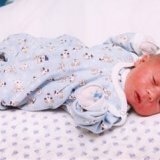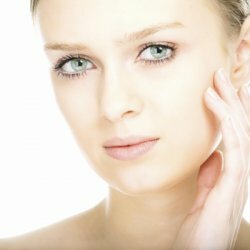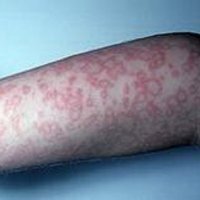Skin diseases of newborns

Quite often after birth, a child develops skin diseases, and such diseases can carry a great danger. A newborn baby has a very delicate skin. Its cover consists of keratinized cells. For this reason, she is very vulnerable and serves as a "perfect soil" for all kinds of infections.
Skin diseases of newborns can be dangerous for the baby, so they need to be treated under the supervision of a specialist, identifying the cause of these diseases. To engage in self-treatment in this case is prohibited, because it is a child who is just beginning to adapt in this world.
Skin diseases of infants
In newborns sweat glands are still underdeveloped and with frequent overheating they may appear as a swab. It is expressed in the form of small pimples, which are located throughout the body. Sweating usually goes by itself, but its frequent appearance indicates that the baby often overheats, so do not wrap the baby tightly, because a strong overheating of the child can cause the worst possible outcome.
A few days after the birth of the crumbs, a spotty, swollen rash - hives or urticaria may appear. Urticaria mainly affects the body of the baby, it does not require special treatment, after a while it passes by itself.
A skin disease like scabies affects the feet and palms of a child and is accompanied by a rash and severe itching. Infection occurs by contact with the patient, the disease can get the whole family. This disease should be treated according to the recommendations of a specialist.
Vesiculosis or small pemphigus occurs in newborns and infants. With this disease of the skin, small bubbles appear in the baby, filled with a clear, sometimes yellowish liquid. They affect mainly the neck, groin, scalp. Such bubbles burst after a few days, becoming crusted. Without timely treatment, this disease can affect the entire body of the child. With this rash the baby should be shown to the doctor. He will appoint the right treatment. Such a disease can be confused with the most dangerous disease - pemphigus of newborns or pemphigus, which arises from pathogens.
Other skin diseases in newborns
After the birth of a baby, a skin condition such as "strawberry nevuses" may appear. It is expressed by red spots that rise above the skin. Such spots grow during the first year of life of crumbs. The face, neck and body are affected. With age, such a disease passes, but nevertheless, such a disease needs appropriate treatment, especially if the spots are located near the eyes. Also immediately after birth, the baby may have such a disease as simple nevi, also called "stork bite."It is expressed on the nape and neck, in the form of reddened spots. Over time, such spots in the child pass.
Some babies have such a skin disease, as infantile eczema. The baby's skin is covered with small spots that cause itching. Such a disease should be treated with the help of a dermatologist.
Seborrheic dermatitis in infants affects the face, chest, knee and elbow folds, but mostly this dermatitis affects the scalp. The peak of the manifestation of this disease to the age of three months in a child. On the head appear dry and yellow scales, the body is affected by a red rash. This disease should be treated under the supervision of a specialist.
Tight swaddling of newborns, increasing friction between skin and clothing, can lead to a disease - diaper dermatitis. From constant friction and urine entering the areas of the body, the skin becomes red( especially in the inguinal areas), which leads to pain and irritation of the skin. You should use disposable diapers, use hygiene products( special oils, powders) when changing diapers, more often make baths, more often undress the baby so that the body dries( room temperature should be appropriate).
In newborns, the treatment of skin diseases should only take place under the supervision of a doctor, as some skin rashes may be a symptom of various life-threatening diseases. Therefore, it is necessary to eliminate first of all the cause of the formation of skin diseases in infants.



